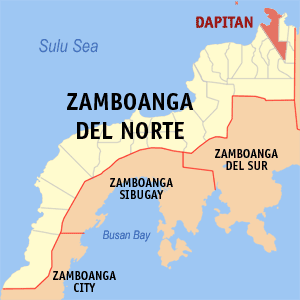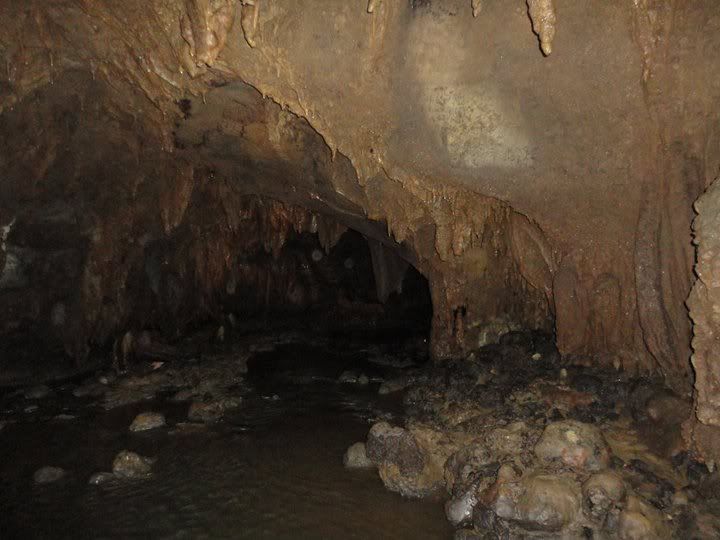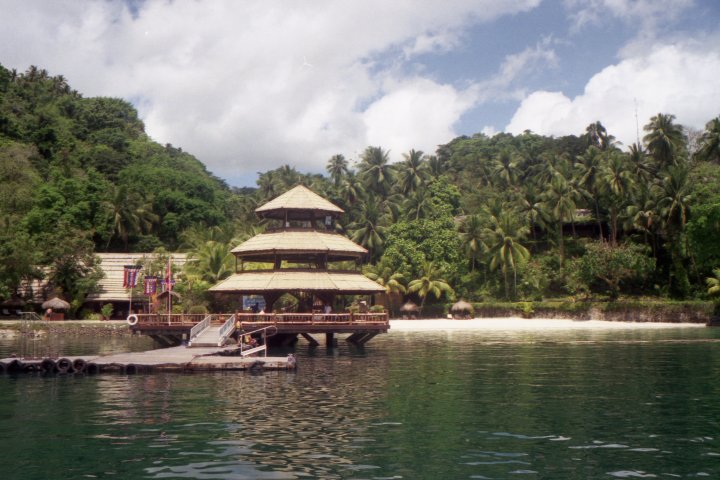Mindanao is the second largest and easternmost island in the Philippines. It is also the name of one of the three island groups in the country, which consists of the island of Mindanao and smaller surrounding islands.
The island of Mindanao is called The Land of Promise. Mindanao is the only area of the Philippines with a significant Muslim presence.
Mindanao has been the site of a separatist movement by the Moro Islamic Liberation Front (MILF), caused by religious differences and widespread poverty. Fighting between MILF and Philippine forces has displaced over 100,000 people, and the conflict has brought in Islamic extremism.
Culture
Cebuano is spoken by the majority of people in Mindanao. Cebuano is generally the native language in most regions, except for the Muslim areas on the west coast and among the hill tribes.
The Spanish-based creole, Chavacano is the official language of Zamboanga City and the lingua franca in other parts of Zamboanga Peninsula and Basilan Province. The dialect Zamboangueño Chavacano is one of the six dialects of Chavacano (whose native speakers are known as the Zamboangueño Latino) Zamboangueño Chavacano is also spoken as a minority language in some other points of Mindanao such as Davao and Cotabato. Zamboangueño Chavacano is also recognized as minority language in Sabah, Malaysia as well.
There are still a number of Spanish speakers, most of them elderly members of mestizo families.
Christians form the majority, with 63% of the population; Muslims are 32% of the population (mostly on the southern part of the island); 5% are affiliated with other religions. The native Maguindanaon and other native Muslim or non-Muslim groups of Mindanao have a culture that is different from the main cultures of the Southern Philippines.
Cebuano is spoken by the majority of people in Mindanao. Cebuano is generally the native language in most regions, except for the Muslim areas on the west coast and among the hill tribes.
The Spanish-based creole, Chavacano is the official language of Zamboanga City and the lingua franca in other parts of Zamboanga Peninsula and Basilan Province. The dialect Zamboangueño Chavacano is one of the six dialects of Chavacano (whose native speakers are known as the Zamboangueño Latino) Zamboangueño Chavacano is also spoken as a minority language in some other points of Mindanao such as Davao and Cotabato. Zamboangueño Chavacano is also recognized as minority language in Sabah, Malaysia as well.
There are still a number of Spanish speakers, most of them elderly members of mestizo families.
Christians form the majority, with 63% of the population; Muslims are 32% of the population (mostly on the southern part of the island); 5% are affiliated with other religions. The native Maguindanaon and other native Muslim or non-Muslim groups of Mindanao have a culture that is different from the main cultures of the Southern Philippines.
Mindanao is composed of 26 provinces.
Zamboanga Peninsula (Region IX)
Zamboanga Peninsula / Western Mindanao is a peninsula and an administrative region in the Philippines. The regional center is Zamboanga City.
Its provinces are:
- Zamboanga del Norte
- Zamboanga del Sur
- Zamboanga Sibugay
- City of Isabela part of Basilan but out of its jurisdiction.
The main language spoken is Subanon. Zamboangueño/Chavacano, Cebuano, English and Tagalog are also spoken, indicative of a high level of literacy.
Cities:
Cities:
- Dapitan City
- Dipolog City
Dapitan is a 4th class city in the province of Zamboanga del Norte, Philippines. It is historically significant as being the place where the national hero, Jose Rizal was exiled by the Spaniards and is known as the "Shrine City in the Philippines."
 |
| Gloria's Fantasy Land, Dipolog City. |
How to get there: They have 6 FANTASYLAND BUSES and 2 vans you can use. They can also discuss routes for you to get there. Click Here to view their website and to contact them.
 |
| Dakak Park and Beach Resort is located in Brgy. Taguilon, Dapitan City, 30 minutes away from Talisay. |
FOR BOOKINGS:
Dakak Park Beach Resort
Dakak Park Beach Resort
Taguilon, Dapitan City, Zamboanga del Norte
(0919) 7959416 / (0915) 3185238 / (065) 2136813
For Manila Office-
Landline: (02) 7211461/7247375, Mobile: (0905) 2712556
The pier in Taguilon is a secondary/alternate port to the main passenger/cargo port in Dapitan City.(0919) 7959416 / (0915) 3185238 / (065) 2136813
For Manila Office-
Landline: (02) 7211461/7247375, Mobile: (0905) 2712556
Dipolog City, is a 1st class city and the capital of the province of Zamboanga del Norte on the southern Philippine island of Mindanao.
Dipolog is known for its wild orchids and its sardine industry which stems from the rich fishing area off its shores. It is known as the "Gateway to Western Mindanao" through the Western Nautical Highway and has also been called the "Bottled Sardines Capital of the Philippines."
Dipolog can be reached by plane via Dipolog Airport or by ferry at the nearby Pulauan Port in Dapitan City.
Cogon Park - is a 344 hectares reforestation area situated in Barangay Cogon established in 1958. Mature trees are growing wild in the area, well landscaped ground at the entrance, parking area, aviary, and different cages for animals. It is also one of the favorite camping sites of different mountaineering groups. The most prominent feature of the park is the Sungkilaw Falls.
Tourist Spots:
Linabo Peak - The 3003 Steps to Linabo Peak offers a panoramic view of the twin cities of Dipolog and Dapitan. It is also the venue for the annual “Katkat Sakripisyo” of Catholic devotees who perform their penitential rites during the Lenten Season.
 |
| The entrance to the 3003 steps Linabo Peak |
| Cogon Eco-Tourism Park |
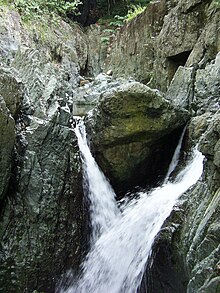 |
| Sungkilaw Falls |
Languages: the most commonly spoken language is Standard Subanon, spoken by 72.47% of the population. Also spoken are: Zamboangueño Chavacano, Tagalog, , Ilonggo, Maguindanao, Iranun, Cebuano, Boholano, and Ilocano.
Tambunan Beach and Marine Sanctuary is supported by DAI and its local partners captured 2nd honors as the most outstanding MPAs in the Philippines at the 2009 "Para el Mar" awards event, held June 28-30 at the Conference of Coastal Municipalities in Cebu City. The 103-hectare Tambunan Marine Sanctuary won 2nd place next to Pilar Municipal Marine Park in Pilar town, located in the Camotes group of islands in Cebu, from a group of 12 finalists, which were in turn selected from a list of 70 nominees.
Tourist Spots:
Location
Tambunan Beach is located 3 km east of Poblacion in Tabina, Zamboanga Del Sur.
Tambunan Beach is located 3 km east of Poblacion in Tabina, Zamboanga Del Sur.
| Tambunan Marine Sanctuary |
 |
Lighthouse at Malim Point |
 |
| Pod-ok Mangrove Boardwalk Photo Credit: Jojie Alcantara |
Nature Spots
- Kumalarang River
- Tabiawan and Busay Waterfalls
- Balagtasan Waterfalls
- Sumagdang Beach
- Malamawi Island
- Alano White Beach Resort
- Sunrise/Lanote Resort Row
- Bulingan Falls
- Matagan beach paradise
- Calugusan Beach
- Palm Beach
A number of Hotels, Resorts and hostels likewise dot the City of Isabela.
The Farmland Resort (Lanote), Anson's Hotel (Sumagdang), Hotel Royal Issra (Marketsite), Casa Rosario (Port Area), Basilan Hostel (Eastside), Buwalan Beach Resort (Sumagdang), ISAWAD Pool Resort (Cabunbata), Basilan Hotel (Isabela Proper), and Grino House (Menzi).
Cathedral of Santa Isabel de Portugal - the seat of the Diocese of Basilan and Prelature of Isabela, built in 1960s mod-art style with a distinctively Classical Roman mosaic for an altar wall.
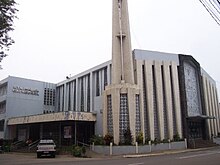 |
| Cathedral of Santa Isabel de Portugal |
Kaumpurnah Mosque - historic seat of Islamic faith and teaching in Basilan, can be seen as you enter the Isabela Channel.
 |
| Kaumpurnah MosquePhoto Credit: lawstude.net |
Alano White Beach Resort - located on the northern part of scenic Malamawi Island, features white sand beaches, day cottages and basic amenities for a day of fun with family and friends.
 |
| Alano White Beach Resort |
The Farmland Resort - a cool family retreat located at the nearby hills of Lanote Barangay.
| The Farmland Resort |
ISAWAD Resort - a refreshing inland pool and water park located in Cabunbata Barangay.
| Isawad Resort |
Northern Mindanao (Region X)
Northern Mindanao is an all occupying the north-central part of Mindanao island, and the island-province of Camiguin. The regional center is Cagayan de Oro City. The provinces and cities are:
There are no seaports in the province, although there is an airport in Malaybalay City. The airport is currently closed. To get to Bukidnon, one must travel by land from Cagayan de Oro City in Misamis Oriental Province.
Tourism and Attractions
Northern Mindanao is an all occupying the north-central part of Mindanao island, and the island-province of Camiguin. The regional center is Cagayan de Oro City. The provinces and cities are:
- Bukidnon
- Camiguin
- Lanao del Norte
- Misamis Occidental with Cagayan de Oro City
- Misamis Oriental
There are no seaports in the province, although there is an airport in Malaybalay City. The airport is currently closed. To get to Bukidnon, one must travel by land from Cagayan de Oro City in Misamis Oriental Province.
Languages Spoken
The lingua franca of the region is Binukid, followed by Cebuano.Hiligaynon/Ilonggo. Ilocano, Tagalog, Maranao, Waray, Ivatan, Tausug and Pampango are also spoken but at low percentage.Tourism and Attractions
 |
| This magnificent waterfall is the Alalum Falls located along the Sayre Highway in town of Sumilao in the province of Bukidnon. It is 148-ft high and is surrounded by lush green forest. |
 |
| Lake Pinamaloy in Don Carlos which can also be seen from the highway. It is a guitar-shaped freshwater lake that’s often used as picnic and fishing area. |
Dialects - Cebuano and Hiligaynon are the widely spoken dialects.
How to Get There - There are three ports in Camiguin. Benoni Port, the largest, is situated in Benoni, Mahinog. The other ports are located in Balbagon (Mambajao) and Guinsiliban. All ports can service inter-island vessels coming from Cebu City, Cagayan de Oro City and Balingoan (Misamis Oriental). Balingoan is the regular jump-off point for people, goods, and commodities to Camiguin.
The island can be reached either by ferryboat or small aircraft. The fastest way to get to Camiguin from Manila is to take any of the commercial flights to Cagayan de Oro City. One can take a taxi from airport to the bus terminal at the city proper which will ferry him to Balingoan Port in Misamis Oriental. The bus ride takes about more or less two hours by land and the ferry boat ride from Balingoan Port to Benoni Port in Mahinog takes about one hour.
To get to Camiguin from Manila via Cebu, take any of the commercial flights to Cebu City. From there, take a taxi to the seaport where an overnight ferry travels from Cebu City to Balbagon (Mambajao) and vice versa on a weekly basis. The ferry leaves on Fridays in Cebu pier and departs Camiguin on Saturdays. A fast ferry used to travel daily from Cagayan de Oro City to Benoni.
Travel time by land to Balingoan from Cagayan de Oro City is three to four hours. The fast ferry to the island is almost two hours. Passenger boats leave regularly at a rate of one trip per hour in and out of Balingoan Port, to and from Camiguin Island.
Tourism and Attractions |
| Tuasan Falls, Camiguin Island |
 |
| Sto Nino Springs, Camiguin Island |
Misamis Occidental, is located in the Northern Mindanao region. Its capital is Oroquieta City.
Laguindingan International Airport, the first International airport in Northern Mindanao region.
Tourism and Attractions
Misamis Occidental Aquamarine Park - is locates at Sinacaban, Misamis Occidental. PhilippinesPark general entrance = PhP 10 / person
Dolphin Island entrance = PhP 130 / person
SCUBA diving = PhP 1,000 / dive
Snorkeling = PhP 50 / hour
Kayaking = PhP 100 / hour
Fish for Fish Feeding = PhP 100 / kilo
Room rates
Suite: PhP 2,000 / night (2 persons w/ breakfast & free entrance to Dolphin Island; extra bed at PhP 300)
Family Room: PhP 2,000 / night (6 persons; extra bed at PhP 200)
Dormitory: PhP 250 / person / night (one dorm cottage can house 14 persons)
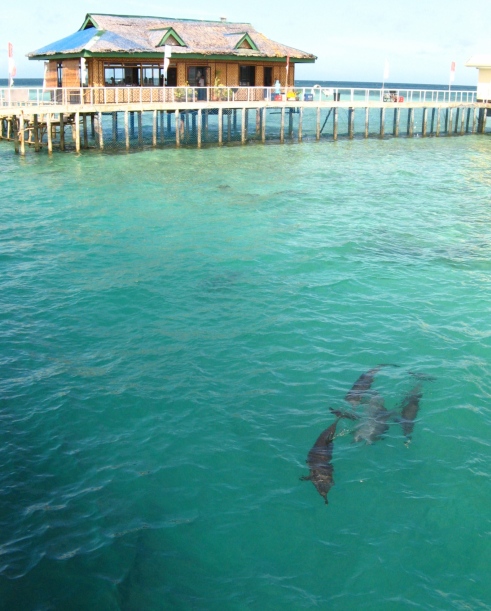 |
| This is the restaurant located at the center of Dolphin Island. |
Cotta Fort and Cotta Shrine - An old Spanish Port build in 1707 to protect this region from marauding pirates, it is only a few meters from the wharf. The Kota has miraculous growing image of the Virgin Mary and has been the object of pilgrims in this part of Mindanao.
 |
| Fort Santiago (Fuerte de la Concepcion y Del Truinfo) in Ozamiz City. |
 |
| Cotta Shrine |
 |
| Immaculate Conception Pipe organ |
 |
| Mt. Malindang Golf and country Club |
 |
Naomi's Botanical Garden |
 |
| Oklahoma Beach Resort |
Davao Region / Southern Mindanao is one of the regions of the Philippines, located on the southeastern portion of Mindanao. The regional center is Davao City. Its provinces are:
- Compostela Valley
- Davao del Norte
- Davao del Sur with Davao City
- Davao Oriental
Tourist Attractions
Maragusan: Aguacan Inland Resort, Tagbibinta Falls, Mt. Candalaga Peak, Haven's Peak,
Kanlawig Hot Spring Sky Garden Restaurant and Fitness Gym
New Bataan: Manurigao Falls, White Peak, Andap Inland Resort
Maco : Mainit Sulfuric Hotspring, Lake Leonard, New Leyte
Nabunturan,San Vicente Caves, Toyuzu Inland Resort
Pantukan: Welborn's Beach, Magnaga Waters, Sea World Oasis
Mabini: Manaklay Beach Park and Resort, Pindasan, Mabini
Mabini: Beach View Resort, Pindasan, Mabini
Mabini: Bern Berioso Beach Resort II, Pindasan , Mabini
Monkayo: Kumbilan Cave,Octagon Park, Mt.Diwata Mining,Monkayo Arena
Monkayo: Mt. Diwata's Peak,Agusan River,Baylo Falls
Davao del Norte, it's capital isTagum City. Davao del Norte is a primarily agricultural, but also engages in mining, forestry, and commercial fishing. Davao del Norte is a major producer of gold, and its mining resources include silica, silver, copper and elemental sulfur. Small-scale gold mining activities thrive in several areas. There are also numerous active quarries of commercial quantities of gravel, sand, and pebbles for construction.
Tourism is also a major part of the economy of Davao del Norte. There are a lot of beaches on Samal Island, the most famous of which is Pearl Farm Beach Resort.
The Province of Davao del Norte is also known as "THE BANANA CAPITAL OF THE PHILIPPINES."
Tourism is also a major part of the economy of Davao del Norte. There are a lot of beaches on Samal Island, the most famous of which is Pearl Farm Beach Resort.
The Province of Davao del Norte is also known as "THE BANANA CAPITAL OF THE PHILIPPINES."
Pearl Farm Beach Resort. The Pearl Farm is located on Samal Island just a short boat ride from Davao City. The 11-hectare resort was once a real pearl farm that cultivated oysters imported from the Sulu Sea, and produces some of the best pearls in the country. Now the white sand beach resort is a top tourist attraction in Davao del Norte with cottages inspired by Isamal native design.
Davao del Sur, it's capital is Digos City. Davaodel Sur enjoys a mild, pleasant climate all year round. Because of its topographical characteristics and geographical location, it is rarely visited by typhoons.
Davao Oriental, it's capital is Mati. The native dialects spoken in this province are Kamayo and Mandaya.
Tourist Attractions
Tagtalisay Beach, Masao Beach Resort, Botona Beach Resort, Dahican Beach, People's Park, Capitol Hills, Buso Hot Spring, Pujada Bay, Pujada Island, Sleeping Dinosaur, Dao Beach Club, Waniban Island, Gregorio Masao Beach Resort, Philippine Eagle Sanctuary. deo Beach.
Socsargen is a region of the Philippines, located in central Mindanao. The regional center is Koronadal City. The name is an acronym that stands for the region's four provinces and one of its cities:
- South Cotabato
- Cotabato
- Sultan Kudarat
- Sarangani
- General Santos City
General Santos City, dubbed as the "Tuna Capital of the Philippines" because of the bountiful existence of Yellow fin Tuna in Sarangani Bay,and as the Highly-Urbanized City it serves as the center of the Metropolitan and Regional Center of trade and industry of SOCCSKARGEN.
Tourist Attractions
Lake Sebu in Lake Sebu - is a natural lake located in the municipality of Lake Sebu, South Cotabato and within the Alah Valley region. The Philippine government has recognized it as one of the country's most important watersheds. Lake Sebu is one of the many bodies of water supplying important irrigation to the provinces of Sultan Kudarat and South Cotabato.it is one of the prime eco-tourism destinations in the Region. famous for its 2 km Zipline, Longest in the Philippines.
Baras Bird Sanctuary in Tacurong City - the most visited site in Tacurong, the Baras Bird Sanctuary is truly a humbling experience. In an almost two hectares of land lying by a river bank here, the crack of dawn offers a melodious harmony of birds; thousands dot the skies also during sunsets, a pleasure for bird watchers.
Gumasa Beach in Glan - dubbed as the "Small Boracay in Mindanao" Barangay Gumasa has a six kilometer-long crescent beach on Sarangani's eastern shore and only about an hour's drive from General Santos City.Gumasa Beach, the Small Boracay of Mindanao or Boracay of the South, whatever name herein is the beauty of the beach. The white sand and fine crystal land makes your feet comportable to walk around the beach.
Fishport Complex in General Santos City - The tuna fishing industry had never been this promising and lucrative since its birth on this side of the earth-General Santos City. Lying at the head of the Sarangani Bay, the city has been dubbed the “Boom Town City of the South,” and considered as one of the fastest-growing cities in the Philippines.Had it not been for its strategic geographical location and existence of other amenities needed by the fishing industry, General Santos City could not have become South Cotabato’s heart of commerce and trade. Boosted with the signs of prosperity sprouting everywhere,” business has never been better,”. With the advent of the operation of General Santos City Fish Port Complex, post-harvest technology equipment needed to prolong the shelf-life of tuna and other species of fish, are made available, thus playing a vital role for trading and other post harvest activities.
Caraga Region (Region XIII)
Caraga is an administrative region of the Philippines, on the northeastern portion of the island of Mindanao. The regional center is Butuan City. It's provinces are:
Caraga is an administrative region of the Philippines, on the northeastern portion of the island of Mindanao. The regional center is Butuan City. It's provinces are:
- Agusan del Norte
- Agusan del Sur
- Surigao del Norte
- Surigao del Sur
- Island Province of Dinagat
Surfing
Siargao is reputed as the surfing capital of the Philippines, and hosts an annual international surfing event. Its waves combine the best features of top-rated waves of Hawaii's fabled "pipeline" and the top-billed waves of Indonesia. The huge and powerful "pacific rollers" have been ranked among the top five breaks in the world, including the "Cloud Nine" which is considered one of the world's top surfing waves. Other excellent breaks, which offer the adventurous surfer top-class exploratory surfing without crowds, are found in the towns of Cantilan, Tandag and Lanuza.
Island-hopping
Hop from island to island while you discover the picturesque landscapes and feast on the rich marine delights like the fresh blue marlin, crabs, squids, seaweeds, giant clams and lobsters. Once in Caraga, you can take your pick of which to visit. The alluring islets and islands of Guyam, Daku, Naked or Pansukian, La Janosa, Pig-ot, Dinagat, Bucas Grande,Britania and the General island in Cantilan have white-sand beaches and are ringed by teeming coral reefs that are ideal for swimming and snorkelling.The region's tropical treats include a boat ride along the naturally-carved water channels amidst the jade-colored lush of mangrove forest in Barangay Manjagao; a journey to the floating village of Barangay Dayasan, and to Buenavista Cave; and a visit to the tropical island paradise of white sand beach, deep blue crystal water in Sagisi island. The Britania in San Agustin-Surigao del Sur hosts 25 unspoiled islets and islands of sugary-white sand and clusters of limestones hills, much like the fabled hundred islands in pangasinan. After having enough sightseeing, swimming and snorkeling, you can spread your picnic blankets in the sand and eat with gusto amidst the serenade of slashing waves and the whispering winds. But you have to bring your food and drinks since there are no restaurants yet in the islands.
Mountain-biking
Great trails run all around the Cities of Butuan and Surigao, Surigao del sur, Agusan del Norte and Siargao. There are regular cross-country and downhill competitions done in these areas which are participated by local and international bikers. Caraga has an active and hospitable biking scene. Butuan or Surigao-based bikers regularly tour the rugged terrain of the region and are eager to show their routes to newcomers.
Trekking
Mt. Mas-ai and Mt. Hilong-Hilong are the best sites for trekking or mountain climbing. The views from the mountains are superb, taking in the full scope of the vast lower Agusan Valley. Close to Mt. Mas-ai lies the picturesque Lake Mainit, which is considered the fourth-largest lake in the country, with a total land area of 147 km². Through the years, the lake has been a known lair for pidjanga, tilapia, kasili, banak, haw-an, gingaw, saguyon and igi. Migratory birds, pagosi and tabokali flowers are its intermittent added attractions. From the coastal areas of Lake Mainit to the hills of Jabonga, Tubay, and Santiago, hikers are offered the opportunity to explore the quiet and interesting life of these places. There are a few established treks in the region, but everywhere else you will be hiking in areas virtually untouched by tourism.
Surigao first became famous for its surf, so kayakers who like big waves enjoy it very much. There are also mangrove swamps in the island where you can paddle both in the main channel and through narrow passages in the mangroves while seeing some wildlife and enjoying the serenity of the place. The first is just behind the Pansukian Tropical Resort while the other one is in del Carmen, where the largest contiguous mangrove forest in the Philippines is located. The "must see" place in Caraga where you can paddle around spectacular limestone formations to a point where you can enter a narrow channel which soon becomes a cave is in Sohoton Cave and Lagoon in Bucas Grande Island, which is more than an hour boat ride from Siargao. Since the sport is new here, only Pansukian Tropical Resort offers kayak tours in several locations around Siargao. Aside from sea kayaking, Masao & Agusan Rivers, Lake Mainit and the Agusan Marshland have tremendous potential for paddling using wooden canoes.
Scuba diving
Scuba diving is a new sport in the region, so there are no dive resorts available in the area but the Butuan Divers Club offers dive safari at Bito Wall in Bolobolo-Jabonga, Lipatan Shoal in Karihatag-Malimono, Punta Diwata Reefs and Balete Wall in Vinapor-Carmen, and artificial reefs in Calibunan-Cabadbaran. For adventurous divers, the coasts of Surigao offer interesting dive site while the islands of Sagisi and Corregidor are excellent for snorkelling activities.
Spelunking
The limestone karst bedrock of some areas in Surigao and Agusan provinces (particularly in the towns of San Agustin, Tagbina, Lianga, Rosario, and Bislig) features dozens of caves, but none of these are regular destinations for recreational cavers. Located within the towns of Tagbina and Bislig, Banbow and Tatol caves (which are ranked the 6th and 9th longest caves in the Philippines) have recently been declared by the Japanese cave explorers as the third longest cave in the country. Some of the most frequently visited and accessible caves in the region are Buenavista and Silop Caves in Surigao City and Libas Cave in Jabonga-Agusan del Norte. These caves have impressive limestone formations and naturally carved stalagmites, stalactites and columns.
Bird-watching
The limestone karst bedrock of some areas in Surigao and Agusan provinces (particularly in the towns of San Agustin, Tagbina, Lianga, Rosario, and Bislig) features dozens of caves, but none of these are regular destinations for recreational cavers. Located within the towns of Tagbina and Bislig, Banbow and Tatol caves (which are ranked the 6th and 9th longest caves in the Philippines) have recently been declared by the Japanese cave explorers as the third longest cave in the country. Some of the most frequently visited and accessible caves in the region are Buenavista and Silop Caves in Surigao City and Libas Cave in Jabonga-Agusan del Norte. These caves have impressive limestone formations and naturally carved stalagmites, stalactites and columns.
 |
| Buenavista Cave, Hikdop Island Surigao City |
 |
| Silop Cave |
The Agusan Marsh in Agusan del Sur is the biggest marsh in the country and is host to diverse species of birds.
 |
| Photo Credit: to Ivan Henares |
Ports and airports
As the overland gateway to Visayas and Luzon, the region is accessible by sea through the baseport of Nasipit in Agusan del Norte and Surigao City, Lipata Ferry Terminal in Surigao city that connects the neighboring province of southern Leyte. Other terminal ports are in Dapa in Siargao, San Jose in Dinagat Islands, Tandag City and Bislig City. Fast craft ferry services ply Surigao-Cebu everyday. Private ports can also be found in the different municipalities of the region, however, only three of these 42 ports are operational.
As the overland gateway to Visayas and Luzon, the region is accessible by sea through the baseport of Nasipit in Agusan del Norte and Surigao City, Lipata Ferry Terminal in Surigao city that connects the neighboring province of southern Leyte. Other terminal ports are in Dapa in Siargao, San Jose in Dinagat Islands, Tandag City and Bislig City. Fast craft ferry services ply Surigao-Cebu everyday. Private ports can also be found in the different municipalities of the region, however, only three of these 42 ports are operational.
The region is serviced by commercial flights to and from Manila and Cebu through the airports of Butuan, Surigao and Siargao both in Surigao del Norte. The Bislig airport used to serviced commercial flights before its operation were suspended. There are six other private owned airports in the region. The ports and airports are supported by the road natworks that connect the provinces within and outside the region.
The Agusan Marsh in Agusan del Sur is the biggest marsh in the country and is host to diverse species of birds.
Autonomous Region for Muslim Mindanao (ARMM Region)
 WARNING: A heavy conflict is going on in the Autonomous Region in Muslim Mindanao (Basilan, Lanao Del Sur, Maguindanao, Sulu and Tawi-Tawi) between Muslim militias and the Philippine government. In 2009 this region was declared the world's most hazardous area for journalists by the Committee to Protect Journalists, with 18 reporters dead in a massacre that claimed the lives of almost 60 people. Travelling to this region is dangerous and strongly discouraged. If it is necessary to visit, inform your embassy, remain cautious at all times and avoid public gatherings.
WARNING: A heavy conflict is going on in the Autonomous Region in Muslim Mindanao (Basilan, Lanao Del Sur, Maguindanao, Sulu and Tawi-Tawi) between Muslim militias and the Philippine government. In 2009 this region was declared the world's most hazardous area for journalists by the Committee to Protect Journalists, with 18 reporters dead in a massacre that claimed the lives of almost 60 people. Travelling to this region is dangerous and strongly discouraged. If it is necessary to visit, inform your embassy, remain cautious at all times and avoid public gatherings.Autonomous Region in Muslim Mindanao (abbreviated ARMM) is the region, located in the Mindanao island group of the Philippines, that is composed of predominantly Muslim provinces. The regional center is . It's provinces are:
- Basilan except the City of Isabela
- Lanao del Sur
- Maguindanao except the City of Cotabato
- Sulu
- Tawi-Tawi
Tourist Spots

